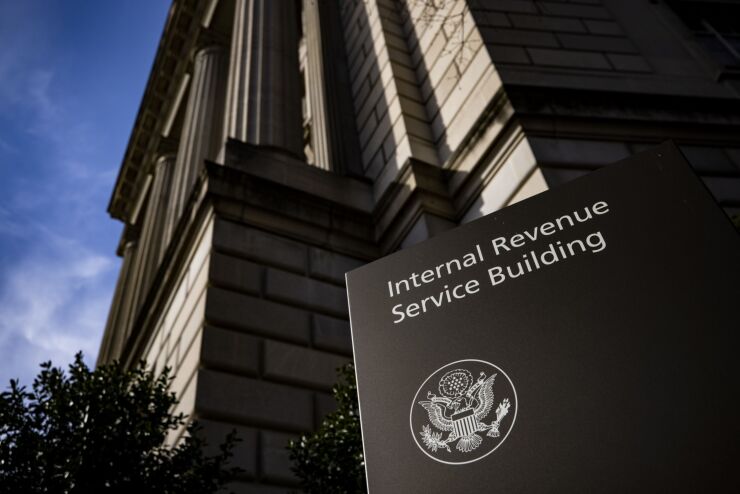IRS sent hundreds of millions in potentially improper recovery rebate payments

The Internal Revenue Service issued potentially improper Recovery Rebate Credit payments totaling $898 million, according to a new report.
The report, from the Treasury Inspector General for Tax Administration, noted that $79.8 million in Recovery Rebate Credits actually should have been paid to eligible individuals, but $818.5 million was paid to ineligible individuals. Nevertheless, the IRS declined to review nearly $598 million of the improper payments and take the actions needed to recover them. The IRS also told TIGTA it has no plans to further help approximately 10 million potentially eligible individuals receive their payments.
The Recovery Rebate Credit was part of the federal government’s efforts to provide a stimulus to the economy during the early days of the COVID-19 pandemic. The CARES Act, passed in March 2020, created the refundable tax credit of up to $1,200 per eligible adult that would be applied toward the taxpayer’s tax year 2020 tax liability. For most taxpayers, that meant receiving Economic Impact Payments deposited in their bank accounts or through a debit card in the mail, but if they didn’t receive their payment, they could claim it on their tax return. In addition, eligible individuals were able to receive up to $500 for each child in their family under 17 years old.

Samuel Corum/Bloomberg
The Consolidated Appropriations Act of December 2020 later added an RRC of up to $600 for each eligible individual and $600 for each eligible child and modified the eligibility requirements for the RRC. Taxpayers had to enter the amounts they received from the payments and credits on their tax returns, and the IRS would reconcile them with its records.
As of May 27, 2021, the IRS had processed 26.3 million tax returns with RRC claims totaling $39.2 billion. TIGTA found the IRS correctly calculated the allowable RRC for 26.1 million (or 99.3%) of those 26.3 million tax returns. However, TIGTA’s testing identified 181,743 returns for which either IRS programming problems (11,797 returns), Error Resolution function tax examiner mistakes (167,130 returns) or timing issues (2,816 returns) resulted in the wrong RRC being given to the taxpayer. In addition, 355,015 potentially ineligible individuals were erroneously issued the RRC, according to the report. They include ineligible dependents, nonresidents and individuals associated with a credit from a U.S. territory.
TIGTA also identified approximately 10 million potentially eligible individuals who have not received an RRC as of May 27, 2021. A number of factors contributed to the problems, including the debit cards that were sent to millions of taxpayers from a third-party financial company. Many of those cards were mistaken as junk mail and accidentally discarded in the trash, although taxpayers had the chance to claim the funds later.
“Finally, debit card policies and the decision to manually verify RRC claims unnecessarily burdened taxpayers and delayed access to stimulus payments for some taxpayers,” said the report.
TIGTA said it issued 12 alerts during its review to alert the IRS about its concerns. The IRS implemented programming changes to address one of those alerts and agreed to take action on four other alerts. These actions include reviewing the tax returns TIGTA identified, taking the actions necessary to correct the taxpayers’ tax accounts, and implementing processes to automate the error resolution process for RRC claims filed during the 2022 filing season.
TIGTA made 22 recommendations to the IRS. They included taking actions to correct erroneous RRC payments; ensuring eligible individuals receive their credit, and notifying individuals who haven’t filed a tax return or didn’t claim the RRC of their potential eligibility. TIGTA also suggested the IRS should obtain recurring data in 2022 to identify individuals who have not activated their debit card for the advance American Rescue Plan Act stimulus payment and establish processes to reverse these advance payments so individuals can receive the RRC on their 2021 tax return.
The IRS agreed with eight of TIGTA’s 22 recommendations. However, the IRS didn’t agree to review erroneous payments totaling nearly $598 million that were paid to ineligible individuals as of May 27, 2021. The IRS also didn’t agree to conduct an analysis to identify and recover additional erroneous RRC payments issued after May 27, 2021. Finally, the IRS didn’t agree to take any actions to ensure the approximately 10 million potentially eligible individuals identified by TIGTA as of May 27, 2021, receive their RRC or to identify others who are eligible for the RRC but didn’t claim the credit.
The IRS pointed out that it processed the vast amount of RRC claims correctly. “Achieving a 99.3 percent accuracy rate was no small feat,” wrote Kenneth Corbin, commissioner of the IRS’s Wage and Investment division in response to the report. “We developed programming for the reconciliation of a single EIP during the 2021 filing season; however, passage of the CRTRA on December 27, 2020 required us to issue the second EIP and to quickly change programming to permit reconciliation of both EIPs, which had slight differences in eligibility criteria, before tax year 2020 returns claiming the RRC could be processed. The changes to our processing systems were programmed and implemented with only a two-week delay to the opening of the filing season.”
With the sudden changes, it’s no surprise that so many taxpayers had the incorrect amounts on their tax returns. Many of the errors caught by the IRS were due to the second Economic Impact Payment not being deducted from the total credit claimed on the tax return. The volume of fallout to the IRS’s Error Resolution System exceeded its expectations for the reconciliation error but did result in the development of automated solutions during the 2021 and 2022 filing seasons.


